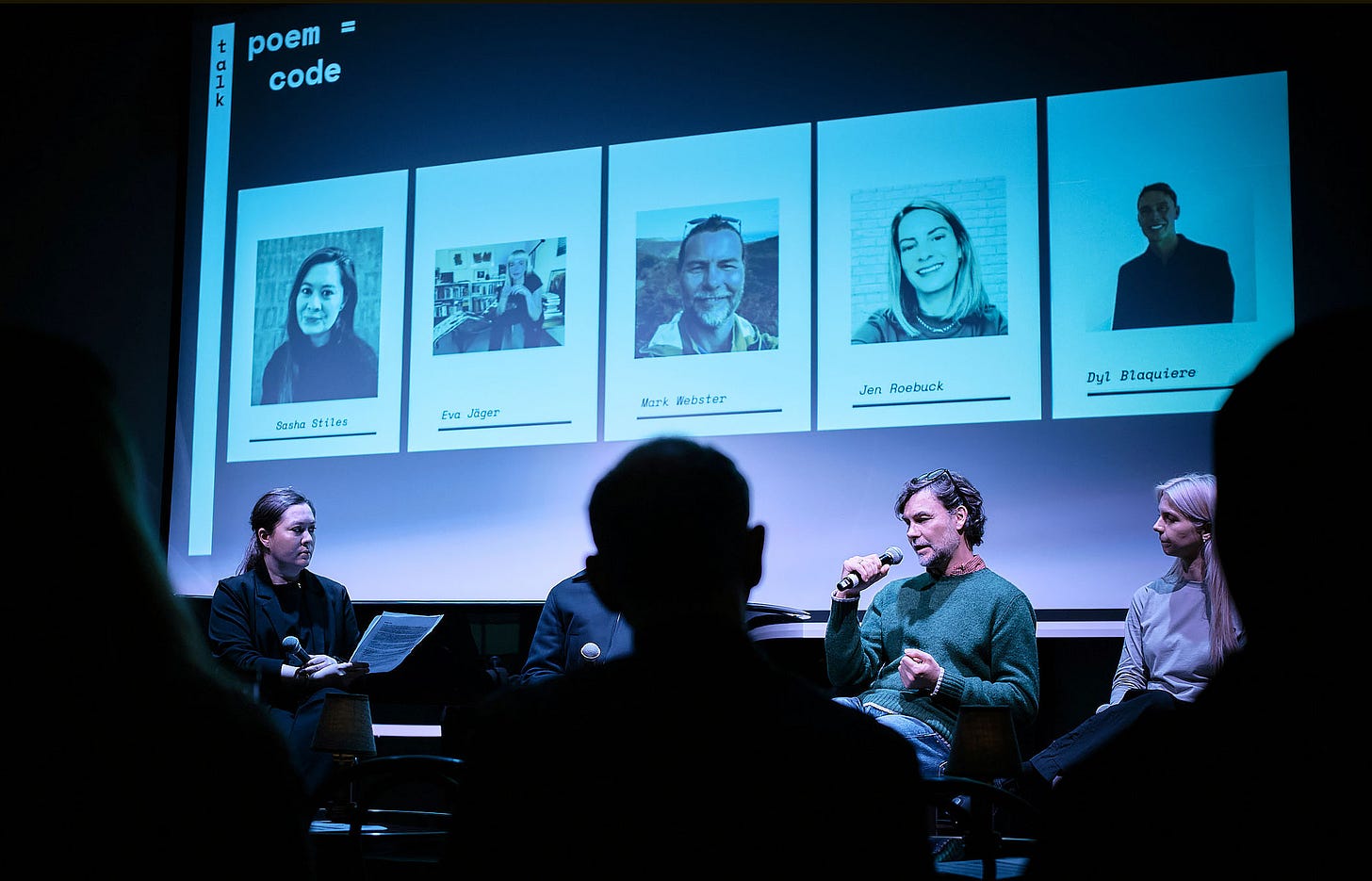Poetry on the rise
A few weeks back, I was invited to participate in a panel on the subject of code and poetry organized by VERSEVerse^1. This loose collective of poets works experimentally with the written word, extending traditional spoken word poetry into contemporary digital realms. What draws me to their work is their multifaceted engagement with text—embracing digital formats, blockchain technologies, and artificial means of writing while supporting an international roster of artists working in diverse poetical forms.
Their latest event in London brought together artists, curators, galleries, and technologists. The gathering yielded fruitful exchanges with a clear message: We are poets here not only to voice our words but to engage with language at large. That was, in any case, my interpretation.
I've been fortunate to receive attention from VERSEVerse for my work—Hypertype, the Cosmic series, and my upcoming book, Hyper & Cosmic. For the event at Ladbroke Hall in London^2, Sasha Stiles, one of the founding members, invited me to explore potential connections between code and poetry in my practice. The questions were stimulating, and it seems fitting to share these reflections in writing.
Both Cosmic and Hypertype are typographic works that have been welcomed as poetic pieces, though one is deliberately more poetic than the other, having been heavily influenced by the Concrete Poetry movement. This observation, however, addresses only the output of computer programs specifically written to create poetical artwork. What about the actual code behind these works—might it also be considered poetry?
When I first contemplated this question, several shared characteristics emerged: Both coding and poetry are languages with vocabularies, grammars, and particular structures designed to achieve specific results. In poetry, we speak of stanzas, rhyme, meter, and forms like haikus, sonnets, odes, ballads, and free verse. In code, we discuss programs, iteration, flow, and structures such as for loops, conditionals, classes, functions, observers, and factory methods.
Code is text—a formal language, certainly, but one that enables expression of ideas beyond merely executing instructions. Programming, like poetry, organizes thoughts to create fields of possibility. This parallel led me to the French literary movement Oulipo (Workshop for Potential Literature)^3, where writers sought new literary structures through playful constraints. They, like me, imagined rule sets from which results would emerge—not unlike the constraints of a haiku, the structure of a sonnet, or the deliberate play with words that defines all poetry.
This reflection triggered a memory of another movement from the 1990s involving programmers working with Perl. The Perlmonks community^4 still documents this work, representing an esoteric intersection of programming and poetry I've been meaning to explore further. Though I'm unsure why Perl specifically became a vehicle for computer language poetry, numerous initiatives have since incorporated many other programming languages. The project Code {Poem}^5 exemplifies this beautifully, collecting poems written by various artists and programmers in printed form.
Recently, I've been exploring generative grammars in JavaScript—partly as research for a project with my students, partly from growing interest in the nuances of language. This work will likely find its final form soon. My aim is to create something playful that deepens our engagement with language broadly. As VERSEVerse seems to understand, language surrounds us, and as it increasingly becomes our primary interface with machines, we would do well to read and listen more attentively to our languages in all their forms.


Just following up with a few links that I had forgotten in the text :
https://vetroeditions.com/products/cosmic-hyper
i LOVE both theVerseVerse and Oulipo! i'm glad theVerseVerse reposted your link on X to your substack, which allowed me to discover it ❤️